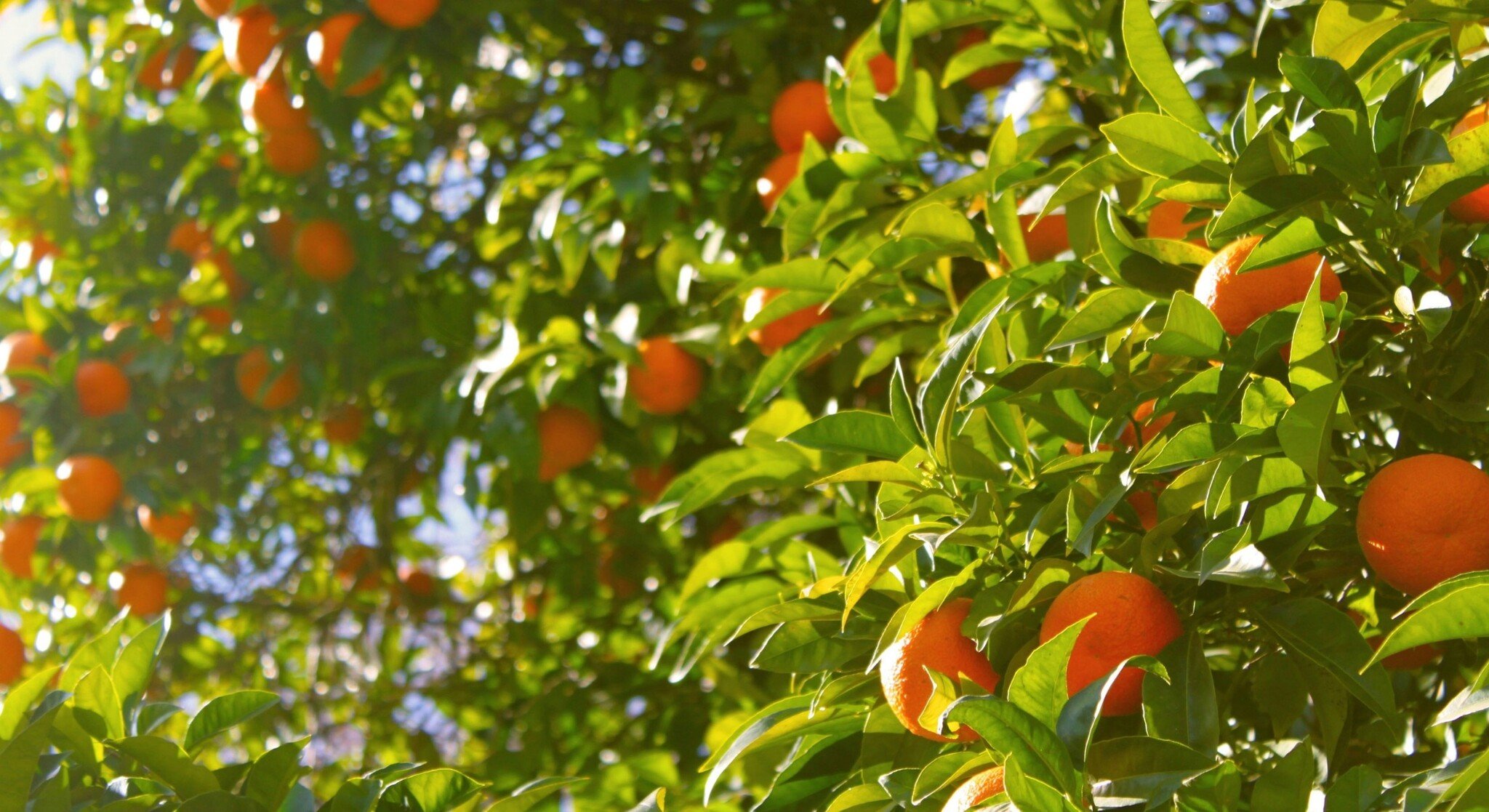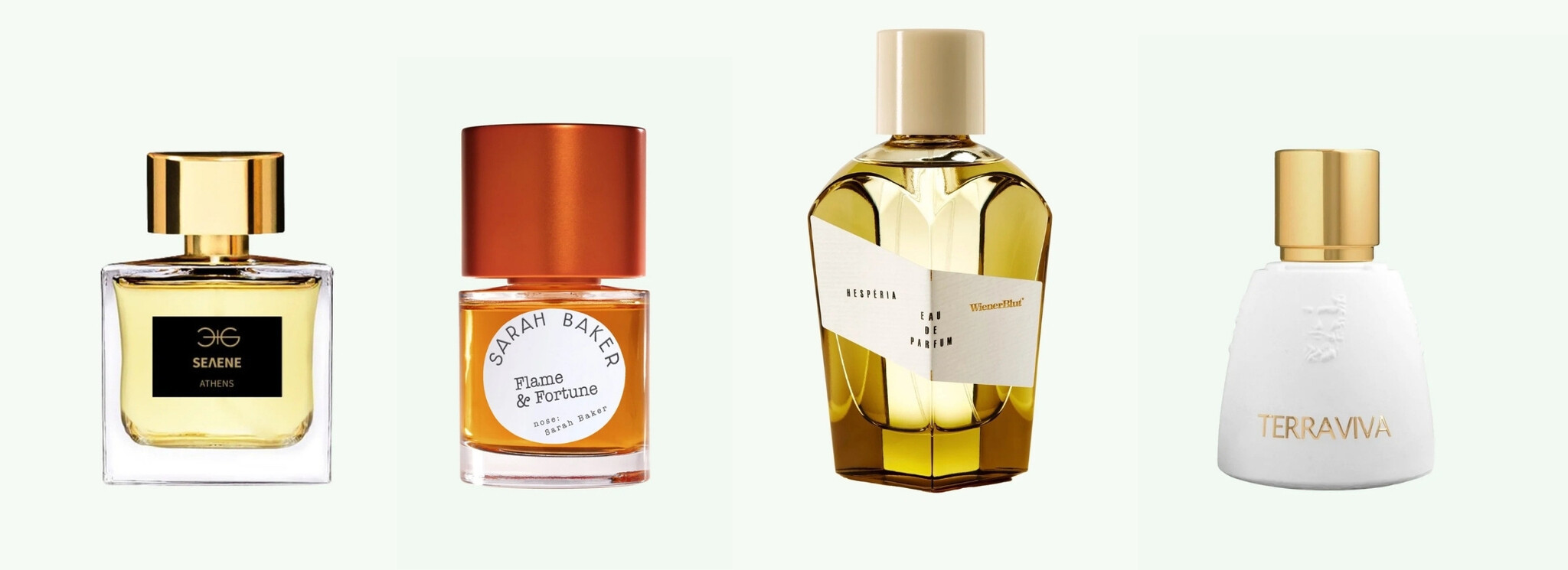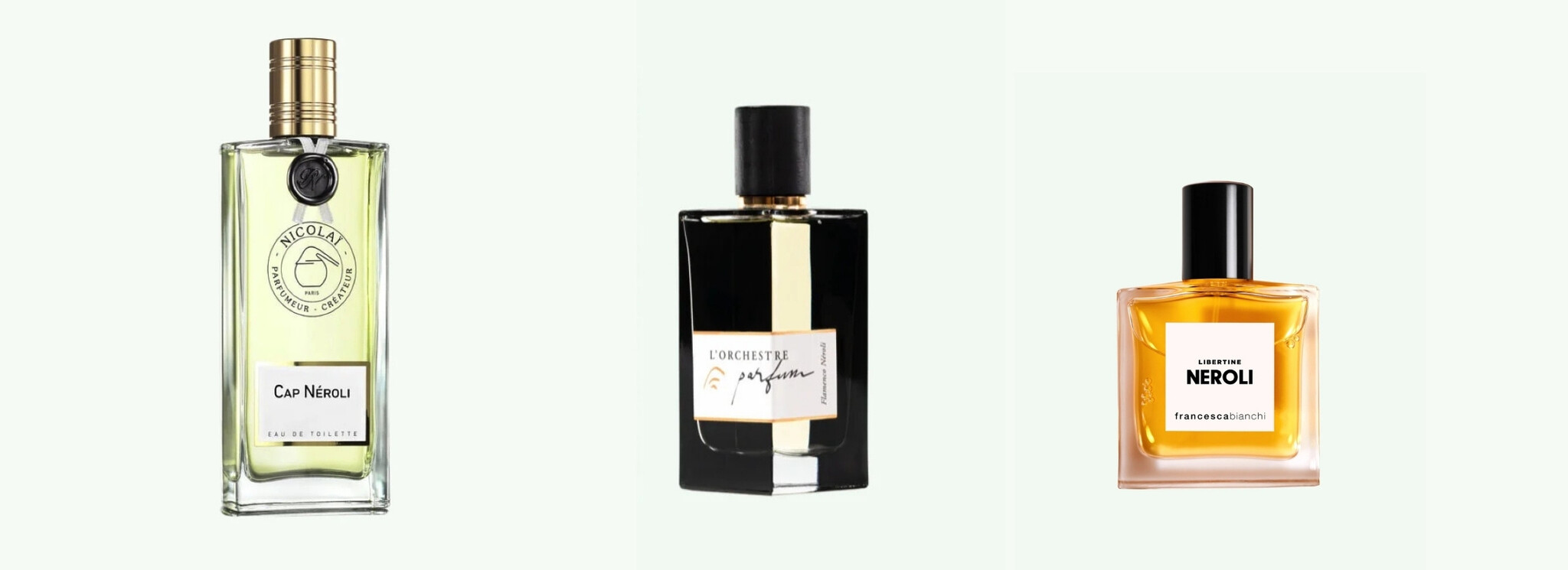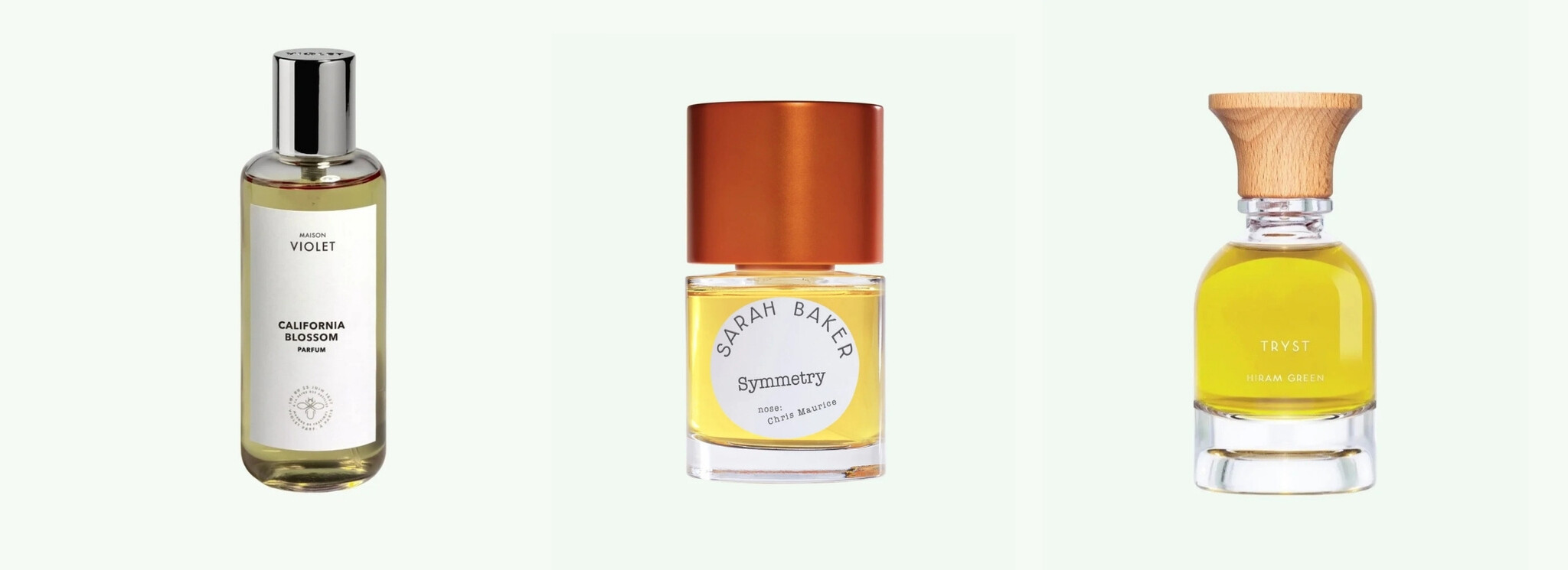One tree, four personalities: the scented saga of the bitter orange
If perfumery were a royal court, the bitter orange or bigarade tree (Citrus aurantium) would be a powerful monarch with a scandalously talented family. From one single tree come four of the most iconic ingredients in perfumery: orange blossom, neroli, petitgrain and bigarade. They’re related by blood (or rather by bark), but they each have their own personality.
Let’s meet the family.
Orange blossom : the queen of seduction
Orange blossom is the glamourous one. She’s sweet, heady, and always slightly overdressed, like a vintage film star lounging in a cloud of white lace and soft-focus lighting. Extracted by solvent distillation from the delicate white flowers of the bitter orange tree, orange blossom absolute is rich, sensual, and creamy. It’s got floral notes like jasmine, with a tiny animalic growl beneath the sweetness. Just enough to make it interesting.
Because of its opulent, full-bodied character, orange blossom is most often found in floral or floral-amber perfumes, adding romance and sophistication to the composition.
You’ll find her draped luxuriously in perfumes like
- Selene by Manos Gerakinis, accompanied with jasmin, violet and a sweet praline note.
- Flame and Fortune by Sarah Baker, with sensual tuberose and a unique motor oil note.
- Hesperia by WienerBlut: citrusy with incense and boxwood.
- Terraviva by Agatho, with citruses, flowers on a woody base with oud and vanilla.
Neroli : the clean cool cousin
While orange blossom wears silk, neroli wears crisp white cotton. Technically from the same flower, neroli is extracted by steam distillation, and that one change makes all the difference. She’s greener, fresher, more composed. There’s something sparkly and slightly bitter about her. Imagine orange blossoms floating in a chilled gin and tonic.
Historically, neroli oil was the scent of aristocracy, famously worn by the 17th-century Princess of Nerola, who perfumed her gloves and bathwater with it. We totally get it: neroli is addictive. Bright, floral, slightly soapy, but never boring.
Thanks to its sparkling citrus-floral character, neroli usually shines in citrusy fragrances, and fresh florals, often giving a luminous, breezy top note.
Find neroli shining in :
- Cap Neroli by Nicolaï: with citruses, aromatic notes and oakmoss
- Flamenco Neroli by L’Orchestre Parfum, with cedarwood and bigarade
- Libertine Neroli by Francesca Bianchi, where the neroli is nestled in a chypre structure with bergamot and oakmoss, with an animalic twist.
Petitgrain : the wild herbalist
While the blossoms are busy being stars, the leaves and twigs of the bitter orange tree are quietly working their green magic. Enter petitgrain: herbal, woody, zesty. If neroli is champagne, petitgrain is an iced herbal infusion with a twist of citrus peel, served under an olive tree.
Petitgrain smells like crushed green leaves and sun-warmed bark. It’s the embodiment of fresh air, clean laundry, and a garden just after it rains. It brings a dry freshness that’s grounding and energizing at once.
You’ll usually find petitgrain in citrus or green aromatic fragrances, often combined with herbs or light woods.
Try Lightsource by Andrea Maack, with green fig, pepper and crystal rose, or Villa Nellcôte by 19-69, with soft flowers and citruses.
Bigarade : the bitter bad boy
Finally, there’s bigarade : the oil cold-pressed from the peel of the bitter orange fruit. He’s not here to play nice. Bigarade is juicy, tart, slightly bitter and edgy. Like that friend who tells you the truth even when it stings, but in a good way.
Bright, tangy, and refreshingly bitter, bigarade adds a sharp sparkle to the top of many perfumes. It’s especially beloved in modern perfumery for cutting through sweetness and adding a twist of character.
Bigarade’s zesty personality makes it a staple in citrus, aromatic and fresh woods perfumes, perfect for energetic summer scents or crisp, minimalist compositions.
You'll find its bold citrus punch in fragrances like Tryst by Hiram Green and Flamenco Neroli by L’Orchestre Parfum
So… are they floral or citrusy?
That’s the fun part: it depends. These bitter orange ingredients live between categories. Orange blossom leans floral. Neroli is citrusy with a floral twist. Petitgrain? Green, herbal, and zesty. Bigarade is pure citrus. Depending on which of these relatives shows up and how they’re used, a perfume might fall into the floral, citrus, green aromatic, or even amber fragrance families.
In other words, it’s not black and white. It’s orange (with many shades of green, white, and gold).
And to make it even more difficult: you will very often find several members of the family in one perfume, each highlighting one aspect of the family-tree.
You will meet 3 or more family members in the clean California Blossom by Maison VIOLET, the contrasting Symmetry by Sarah Baker where they are mixed with oud, the all natural Tryst by Hiram Green, and the summery Cap Neroli by Nicolaï.
Photo credits: Tyler Shaw on Unsplash









